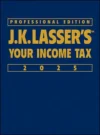Who Are Your Dependents?
One of the most basic tax rules is also one of the most confusing and misunderstood. On tax returns for 2009 and 2010, each dependency exemption is a deduction of $3,650. In 2010, there is no longer any reduction in this amount if you are a “high-income” taxpayer. So the deduction can be significant; there is no limit on the number of dependency exemptions you can claim.
TLC’s Jon and Kate can, for example, claim a write-off of $29,200 for their eight children (although we don’t know under the terms of their divorce who is claiming what). To be a dependent, the person must be a qualifying child, a qualifying relative, or a person designated as your dependent on Form 8832 (waiver of exemption by custodial parent) or 2210 (multiple support agreement). Here are some basic rules and how they operate in specific situations.
Qualifying Child
The tax law has six conditions for a child to be considered your dependent:
- The child must be your son or daughter, stepchild, foster child, or your grandchild. A child can also be your sibling or any of your sibling’s children or grandchildren.
- The child must be one of the following three: (1) under age 19 by the end of the year and younger than you; (2) under age 24, a full-time student for at least 5 full months in the year, and younger than you (or your spouse); or (3) any age if permanently and totally disabled.
- The child must live with you for more than half the year, with some exceptions.
- The child must not provide more than half of his or her own support.
- The child, if married, does not file a joint return with his or her spouse unless it’s only to obtain a tax refund.
- You, and not someone else, is entitled to claim the exemption (see the discussion about divorce below).
Qualifying Relative
For a dependency exemption for someone who isn’t your qualifying child, four conditions apply:
- The person cannot be your qualifying child or a qualifying child of anyone else.
- The person must be either your relative or a person who is a member of your household.
- The person’s gross income must be less than $3,650.
- You must provide more than half the person’s support for the year.
Divorced, Separated, or Never-Married Parents
The dependency exemption can become complicated when parents divorce or separate, or were never married and both want to claim the exempt for a child of their union. Who wins?
Usually, the child is treated as a dependent of the custodial parent, who is the one with physical custody of the child. If parents share custodial, the parent with custody for the greater number of nights during the year is the custodial parent. If these nights are equal, then the parent with the higher adjusted gross income is the custodial parent. The noncustodial parent can claim the exemption only if the other parent signs Form 8332, waiving the custodial parent’s right to the exemption.
Multiple Support Arrangements
When two or more individuals contribute to the support of another, who claims the exemption? It depends. As long as a person contributes more than 10% and the group contributes more than 50%, then any 10% contributor in the group may be eligible for the exemption. The group decides among itself who will claim the exemption and signs Form 2210, Multiple Support Declaration, to show this designation. The exemption in this case can be claimed for someone related to you or someone who lives with you for the full year as a member of your household.
Special Situations
Now that you know the basic rules, here’s how they are applied in real-life situations presented by JKLasser.com readers:
Situation 1: A 29-year old daughter quits her job as a nurse to live with her parents so she can attend to her ailing grandmother, who lives there, too. The parents make her car and insurance payments; the grandmother pays for food and gas. The daughter has no outside income. The daughter can be a dependent of the parent or grandmother, depending on whether the rules for a multiple support agreement are met. For instance, if the parent provides 75% of daughter’s support and the grandmother provides the other 25%, Form 2210 should be signed to designate the person who will claim the exemption.
Situation 2: A 30-year old son who lives with his parents is on Social Security disability. Because he is permanently and totally disabled, his parents can claim him as a qualifying child even though he is no longer young.
Situation 3: A grandchild lives with his grandmother, who provides almost all of his support, along with a few dollars from the state’s Department of Human Services. The child’s father technically has custody but lives in another state; he provides no support and does not even see him. The child’s mother is out of the picture. The grandmother in this case can claim the exemption because the grandchild is her qualifying child. The grandchild lives with her more for more than half of the year and no other taxpayer is eligible to claim the child as a dependent.
Gross receipts
Total business receipts reported on Schedule C or Schedule C-EZ before deducting adjustments for returns and allowances and cost of goods sold.



